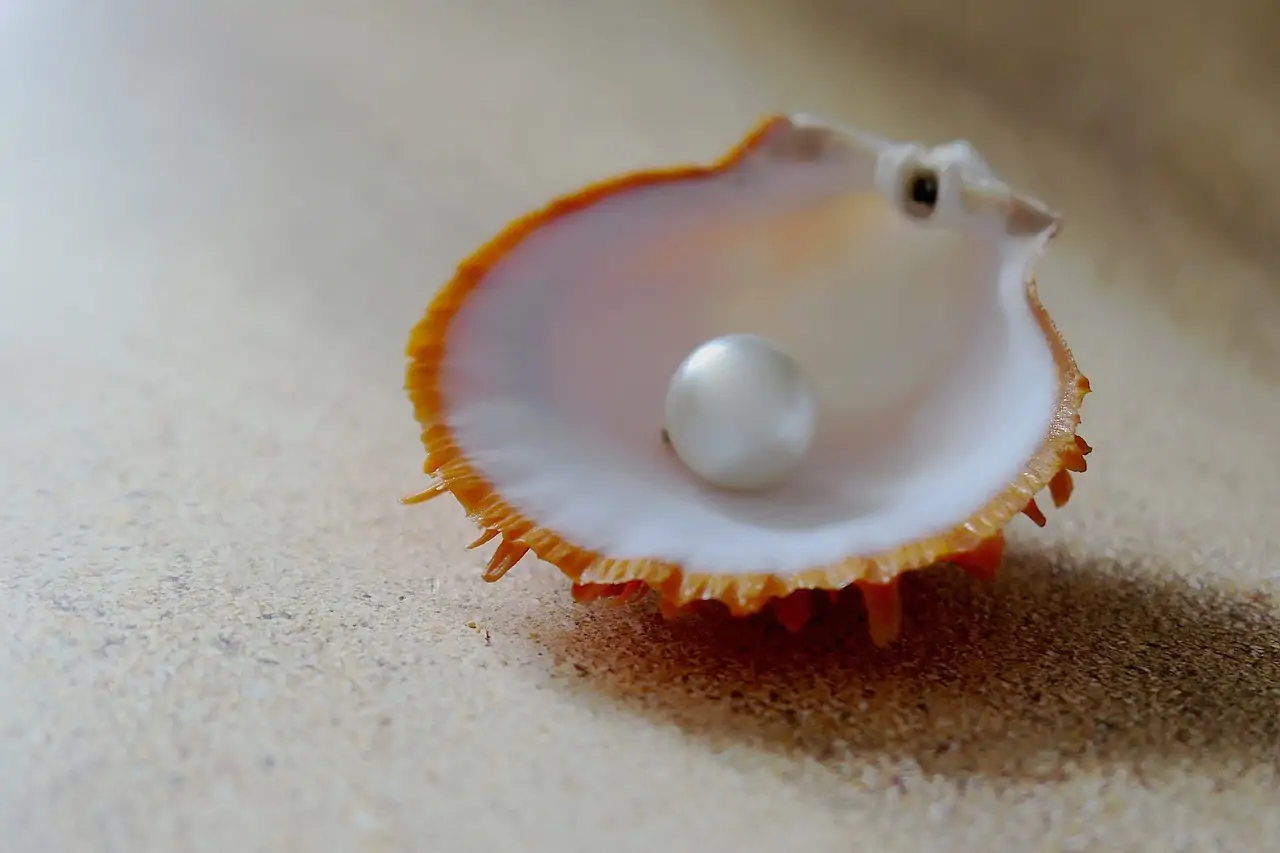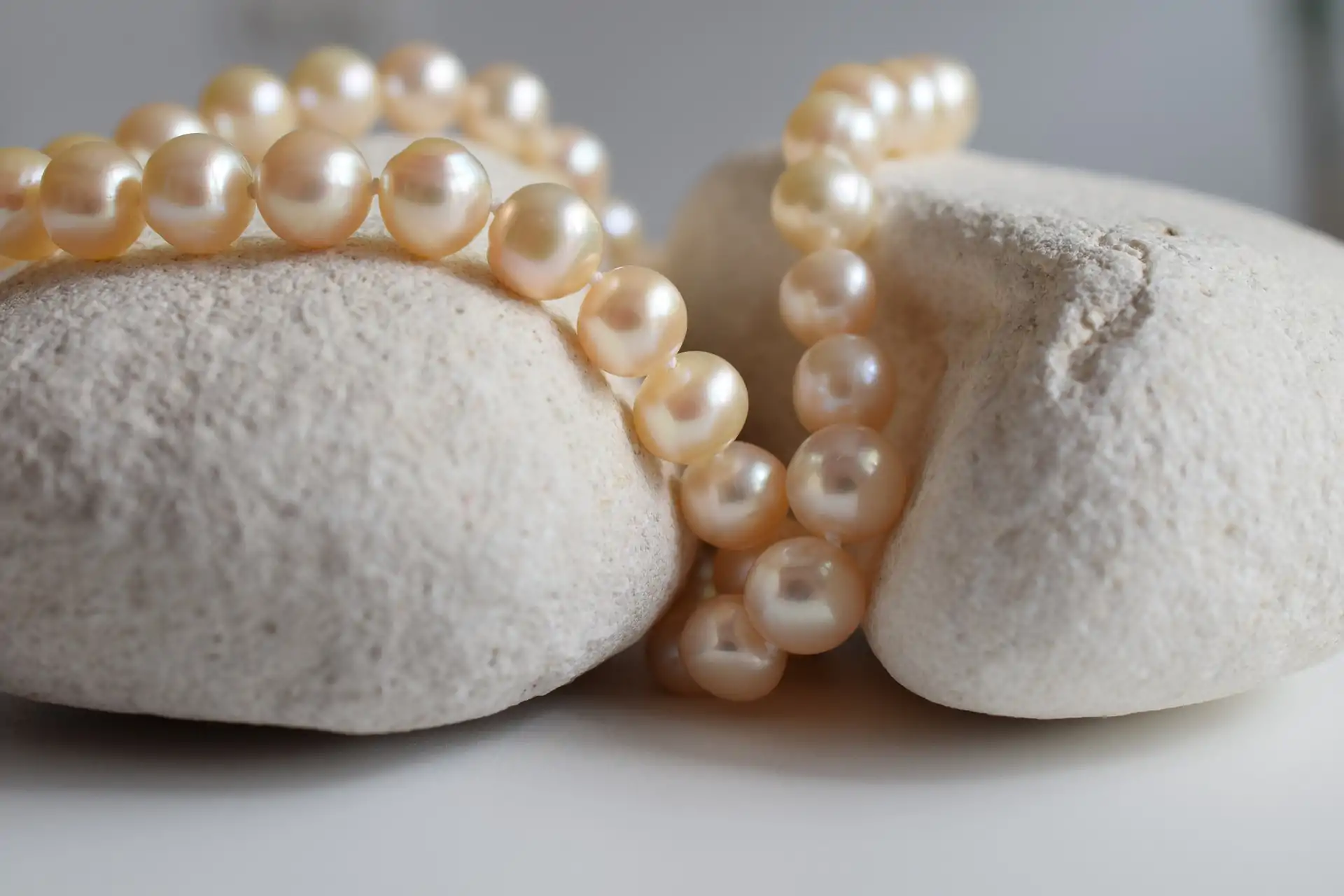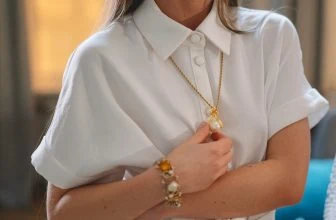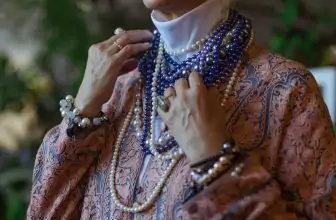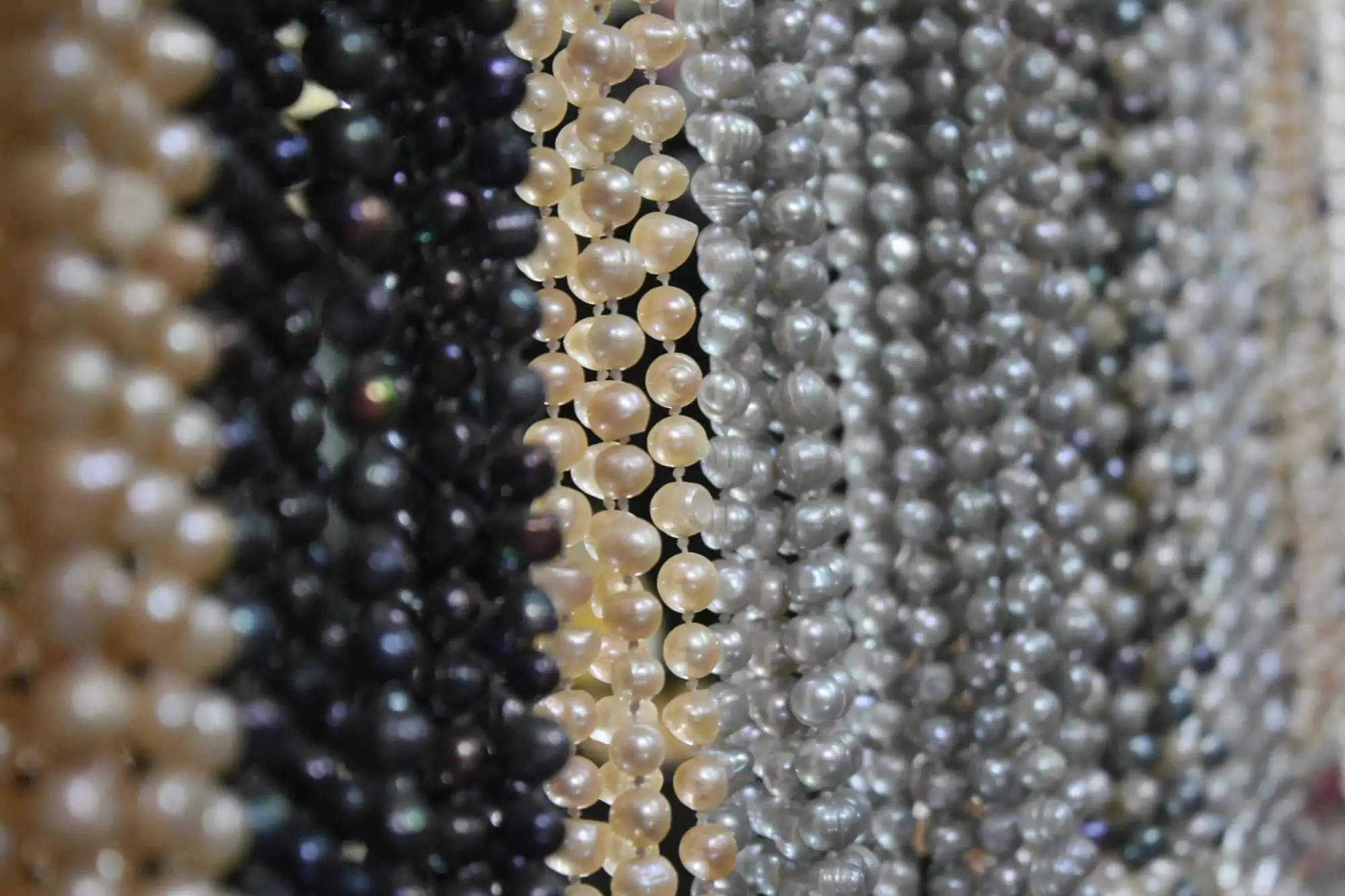
Table of Contents
As Jewelry Shopping Guide editors, we write about things that we love and we think you’ll like too. We often have affiliate partnerships, and may generate some revenue from these links at no cost to you.
A beautiful strand of pearls never goes out of style, making pearls one of the best jewelry investments. But with all the types and varieties of pearls available on the market, choosing the right one for you can be difficult. Do you know your Akoyas from your Tahitians or your Freshwaters from your Keshis? If all these names are getting you confused, here’s a quick and comprehensive guide on the various types of pearls you can find on the market.
Natural Vs Cultured Pearls
First of all, it’s important to note that there are two main types of pearls – natural and cultured.
Natural pearls refer to pearls that form in oysters or molluscs naturally when an irritant finds its way into the creature. The animal then secretes layer after layer of nacre to combat the irritant, which is how the pearl gradually forms. This is a time-consuming and slow process that can take many years.
Cultured pearls, on the other hand, refer to pearls that are acquired through farming and harvesting processes. Here, ‘farmers’ raise the oysters or molluscs in pearl farms, in conditions similar to nature. The main difference is that the irritant, or pearl nucleus, is carefully embedded into the creature by humans and then the oyster is left to do its work.
As in nature, the creature will coat the nucleus with nacre, creating a beautiful pearl. Most of the pearls on the market today are cultured pearls which are more affordable and abundant. Natural pearls are extremely rare and very expensive, putting them beyond the reach of most consumers.
You might be wondering:
Which is the better type of pearl? From a practical perspective, there is no difference between natural and cultured pearls. They are identical in appearance and composition, with the only difference being in their origin and price. From a romantic point of view, natural pearls are more desirable as they are accidental products of nature.
Now let’s take a look at how pearls (natural or cultured) can be subdivided into categories.
Freshwater vs Saltwater
All pearls can be categorized into two main types – freshwater or saltwater. There are distinct differences between these two types, with saltwater pearls generally considered the superior of the two. For detailed information, read our article on saltwater vs. freshwater pearls.
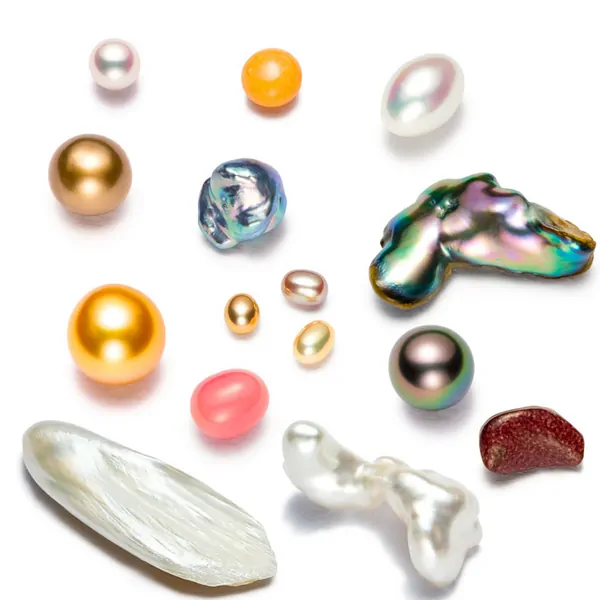
Here’s a quick overview:
Saltwater pearls are formed in oysters in oceans and are popularly harvested in regions such as Australia, Tahiti, Thailand, and Indonesia. Saltwater pearls take longer to form, have a better luster, and are of higher quality than freshwater pearls. However, they are also more expensive and can be slightly less durable.
Freshwater pearls are grown in molluscs in lakes and rivers, commonly in China, Australia, India, the US, and Japan. These take a shorter period of time to form and are more abundant. Freshwater pearls are not as lustrous and generally smaller than saltwater pearls, but they are much more affordable.
Almost all freshwater and saltwater pearls found on the market are cultured.
Freshwater Pearls
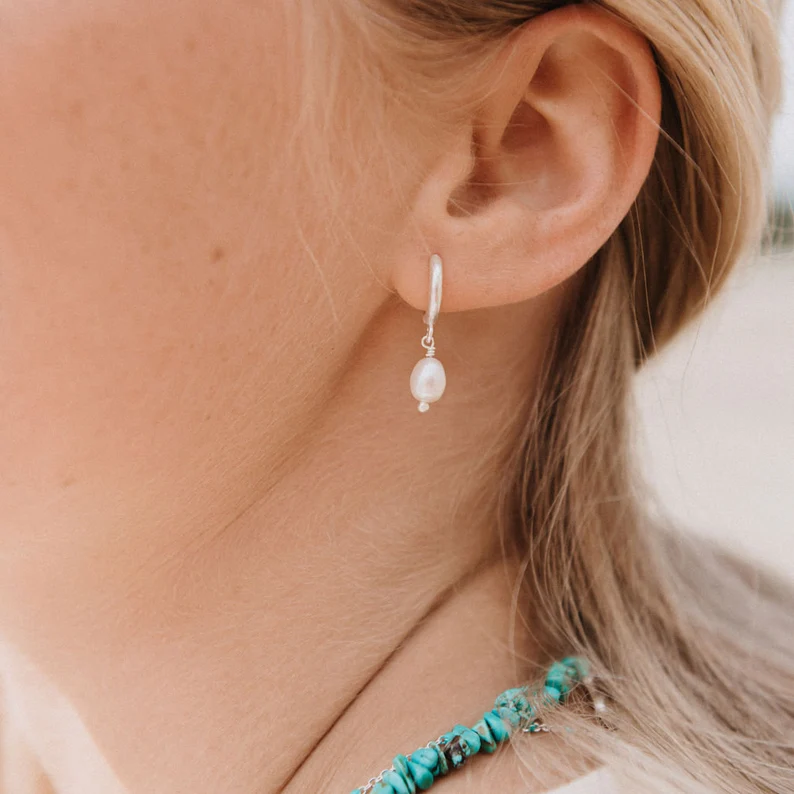
In the past, freshwater pearls were considered a low-quality alternative to Akoya pearls. However, with the improvements in freshwater pearl harvesting, this variety of pearls has become almost as good as Akoya’s in terms of value and quality.
Freshwater pearls are often called fashion-forward pearls. This is because they offer consumers a lot more choices than saltwater pearls, in terms of shapes, size, and colors.
Over 90% of freshwater pearls are of irregular shapes and not the perfect spheres that are generally the most desired. This is because these pearls are not created using a ‘bead’ nucleus (as is typical with saltwater pearls) but rather by inserting tissue from a mussel into the harvesting mussel. The result is a pearl that is composed entirely of nacre, and is more durable than saltwater pearls in that it is less prone to chipping or damage.
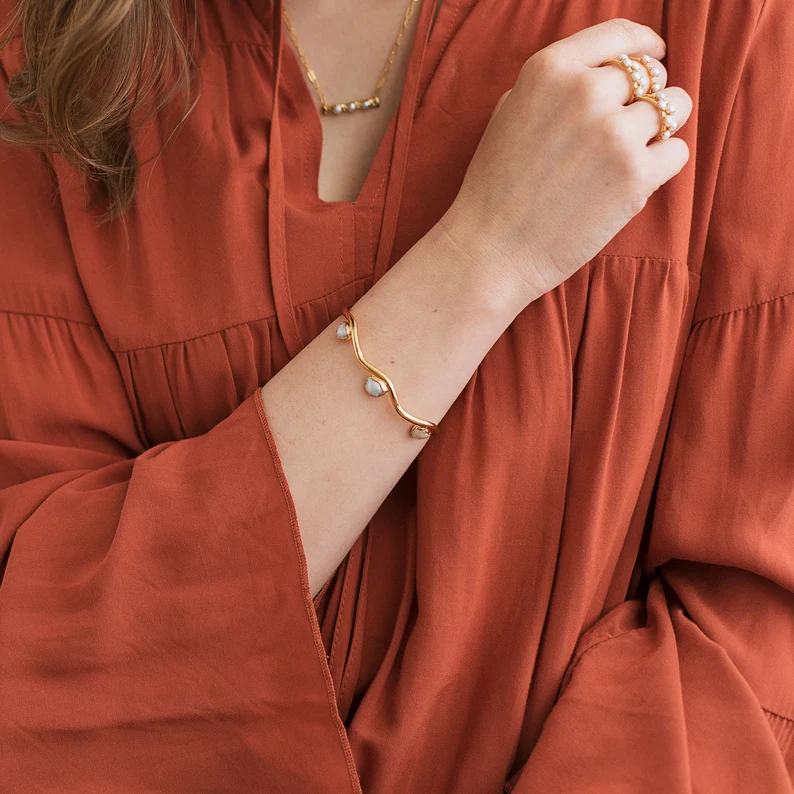
The irregular pearl shapes are commonly oval, baroque, and semi-baroque in shape. Of late, such pearls have been skyrocketing in popularity and are gorgeous when set in jewelry. They are beautiful and unique and each offers something a little different.
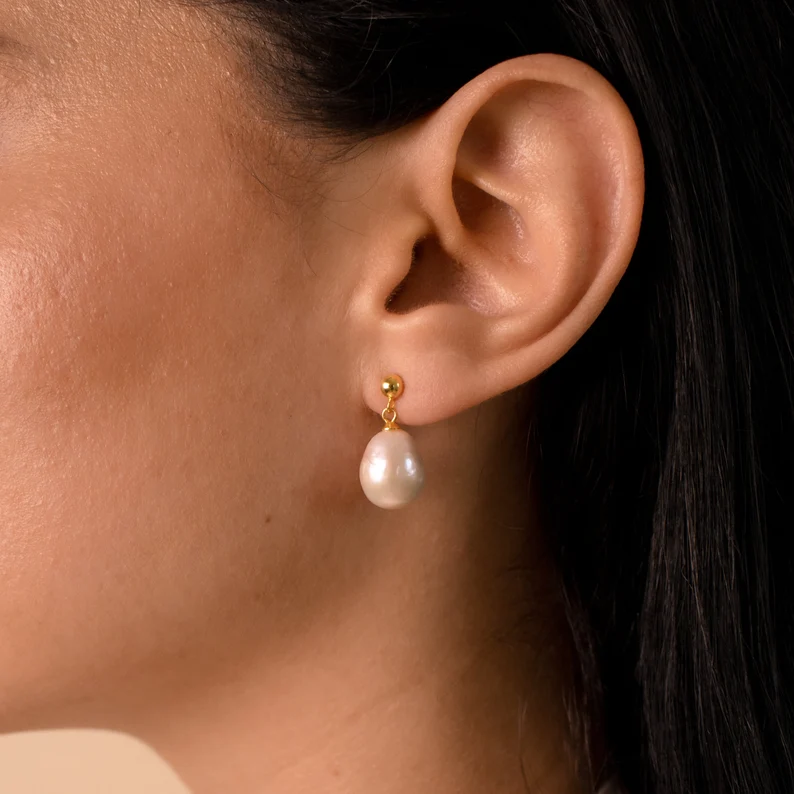
Because freshwater pearls are grown and harvested in a short period of time, they often don’t have enough time to grow large. However, the growth period varies from farm to farm, which is why freshwater pearls have the widest size range of all pearl types. Their sizes vary from around 2.0 mm to 15.0 mm.
In terms of color, these pearls are commonly found in white or cream shades with beautiful overtones of pink, cream, and lavender. Black freshwater pearls can also be found, but these receive their color through artificial dying.
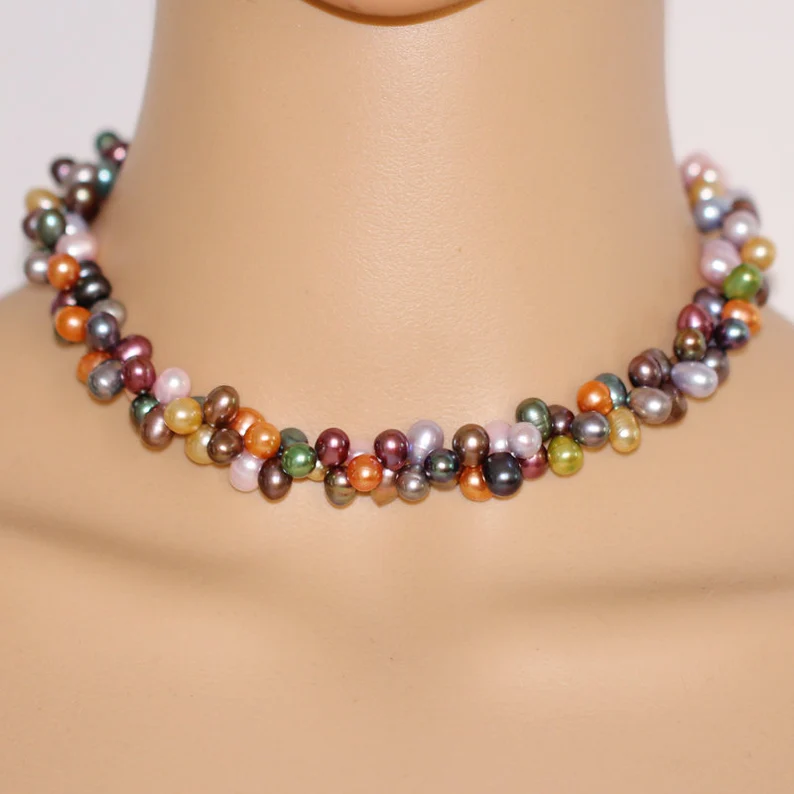
Note that some pearl vendors coin their own terms to describe their pearls. For example, Pearl Paradise has what they call Freshadama pearls which refers to their top-of-the-range freshwater pearls. The best way to choose the best pearls is to carefully inspect the pearl in person or via HD images and video.
Saltwater Pearls
Saltwater pearls come in many varieties and seem to be more commonly known than freshwater pearls. Here are the most common varieties:
1. Akoya Pearls
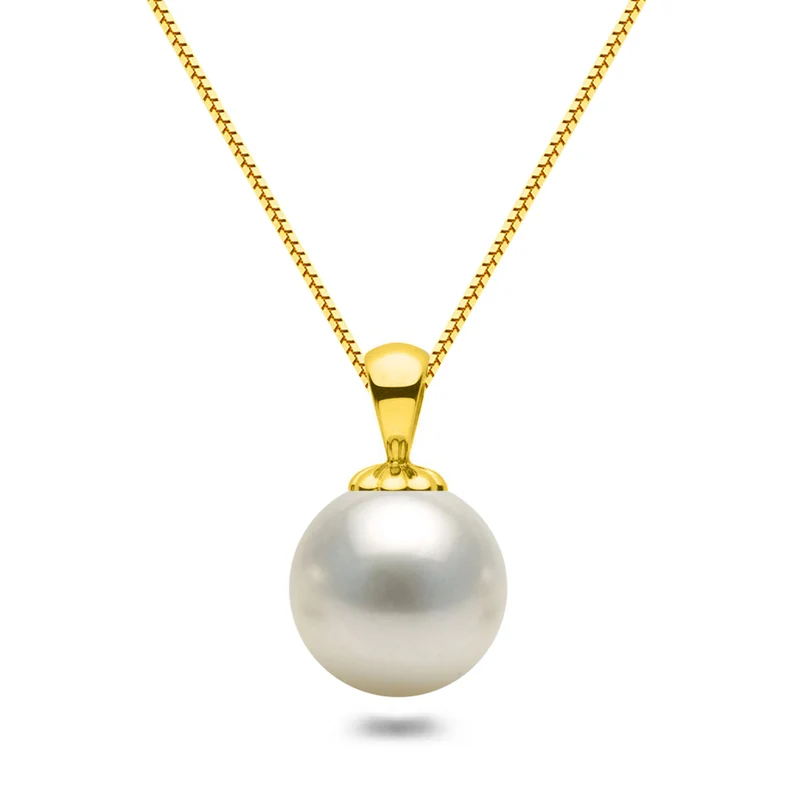
Harvested: Japan, China, Korea and Vietnam
Origin: Pinctada fucata oyster
Size: Ranges from 2.0mm to 10.0mm
Color: White, gray, cream, blue
Overtones: Silver, pink, green
Treatments: Sometimes dyed to obtain black
Shape: Perfect spheres, sometimes baroque

If you’re thinking of a classic strand of white pearls, you’ve probably got Akoya pearls in mind. These are the most well-known type of saltwater pearls and are sought after for their beauty, luster, and competitive prices.
Akoya pearls are the most abundant saltwater pearls. Most of the Akoya pearls on the market are produced in Japan, while a smaller percentage comes from China, Vietnam, and Korea. The Akoya pearls that come from Japan, however, are the best. You may come across the term Hanadama Akoya when searching for pearls. This is the name given to the very best Akoya pearls that originate in Japan. In Japanese, Hanadama means ‘flower pearls’.
Akoya pearls were the first to be cultured in the 1920s. Prior to this, pearls were so rare and expensive that only the privileged could afford them. Culturing pearls brought down costs and made pearls readily available to everyone.
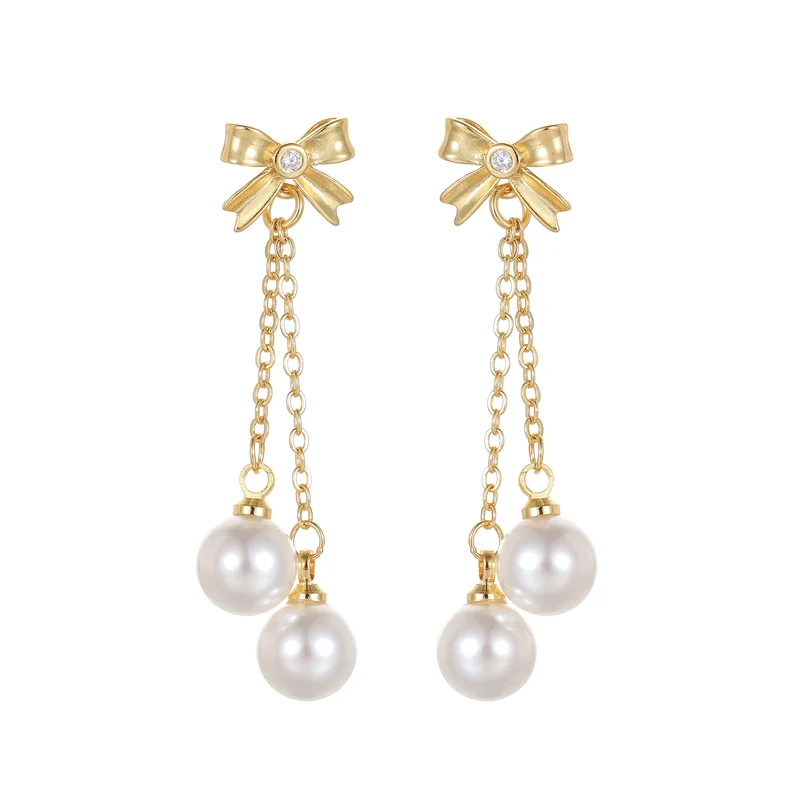
Akoya pearls are extremely lustrous and gorgeous in appearance. Akoya pearls are typically small pearls, with the average size being 7mm, although they can grow to 10mm. They are typically perfectly round in shape, although sometimes irregularly shaped Akoya pearls can be found.
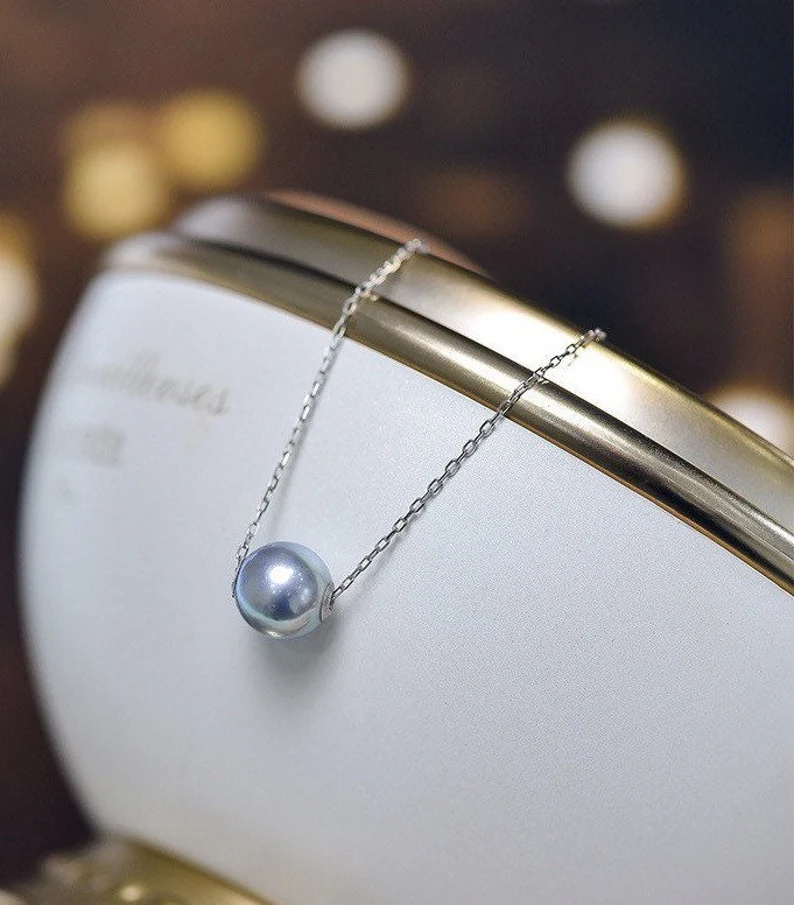
Akoya pearls are often white, grey, or cream, with pink, silver, or green overtones. You can sometimes find blue Akoya pearls with silver overtones but these are quite rare and pricey. As black Akoya pearls don’t occur in nature, any such pearls you see on the market have been dyed, giving you an affordable alternative to Tahitian pearls.
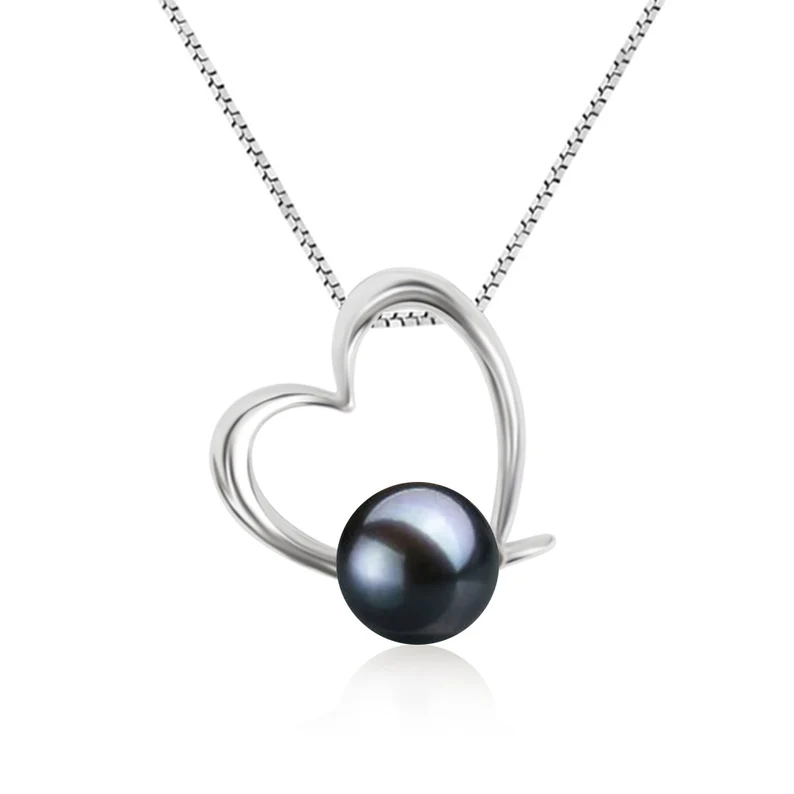
You might be wondering:
Are Akoya pearls valuable? They are more expensive than freshwater pearls but not as valuable as some other saltwater varieties. Akoya pearl prices can vary from about $60 to thousands of dollars. The prices of Akoya pearl jewelry range depending on the quality of the settings and the size and quality of the pearl.
2. South Sea Pearls
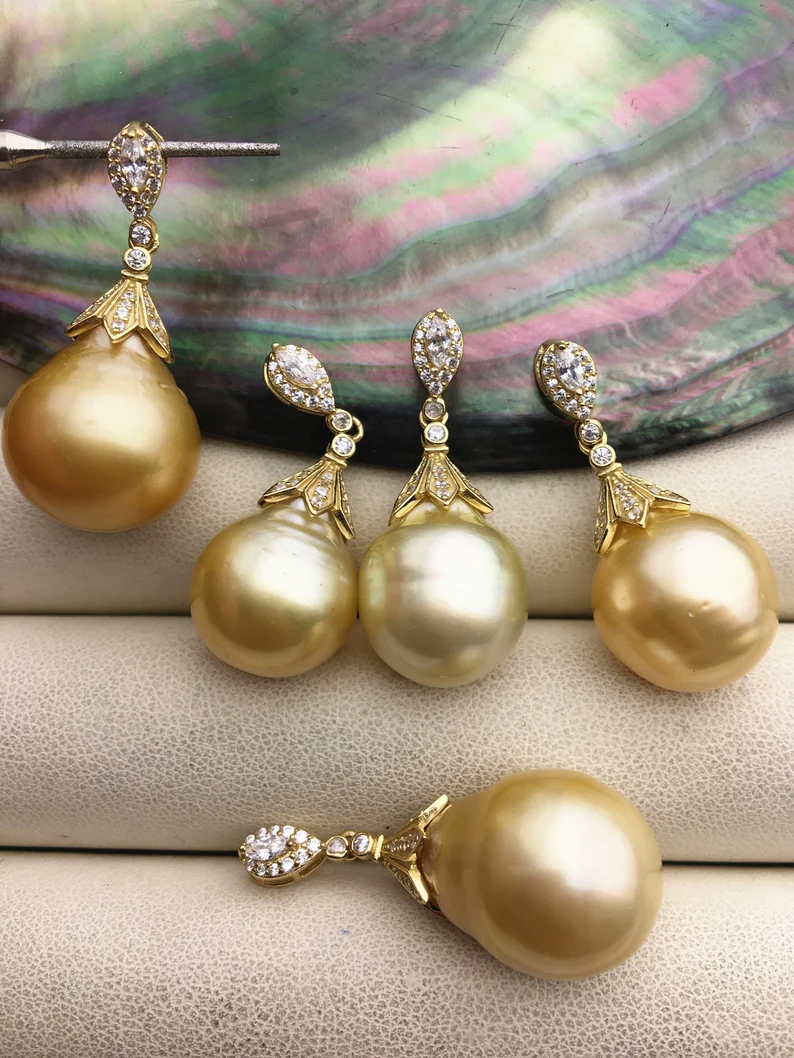
Origin: Mainly Australia (White South Sea variety) and Philippines (Golden South Sea variety)
Size: Ranges from 8.0mm to 20.0mm
Color: White and gold
Treatments: Less than 1% are treated
Shape: Round and baroque
South sea pearls are the most prestigious of all the pearl varieties. They come in two main colors – white and gold. While white south sea pearls have the traditional appearance of pearls, golden south sea pearls are quite a show-stopper! They are unique and very elegant in appearance. The golden variety is highly in demand at present as more people turn towards less conventional jewelry choices.
South sea pearls are the largest of all pearl varieties and have an unmistakable beauty that comes from the luster and color of the pearl. Most come from Australia, the Philippines and Indonesia.
These pearls can grow to be 20.0mm in diameter, but pearls over the size of 15.0mm are very rare. Larger pearls command higher prices and are ideal for statement jewelry. Regarding shape, most south sea pearls are irregular in form. This is why south sea pearls that are perfect spheres can command very high prices.
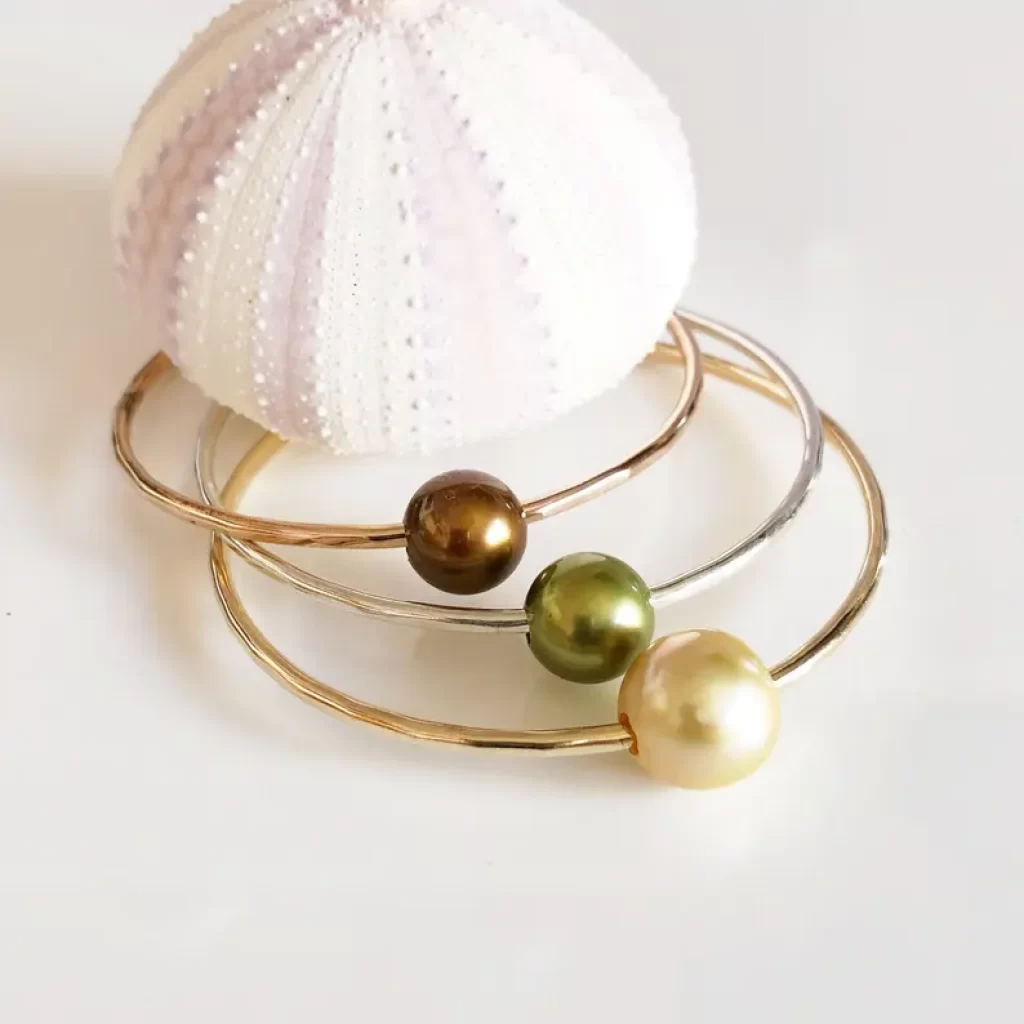
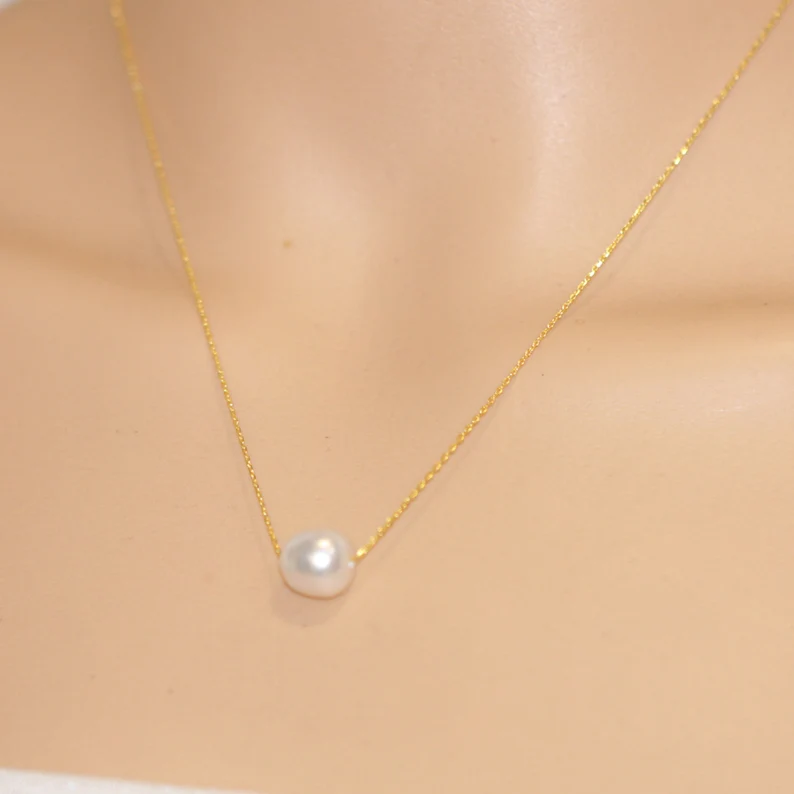
If you love the look of south sea pearls but cannot afford an entire strand, there are lots of gorgeous jewelry designs that highlight a single pearl. These have a modern and stylish look and are a great way to update your jewelry collection. When it comes to south sea pearls, a little goes a long way. An entire strand of large golden south sea pearls may be too dramatic for your tastes, but a single pearl on a necklace may be just the thing you’re looking for.
3. Tahitian Pearls
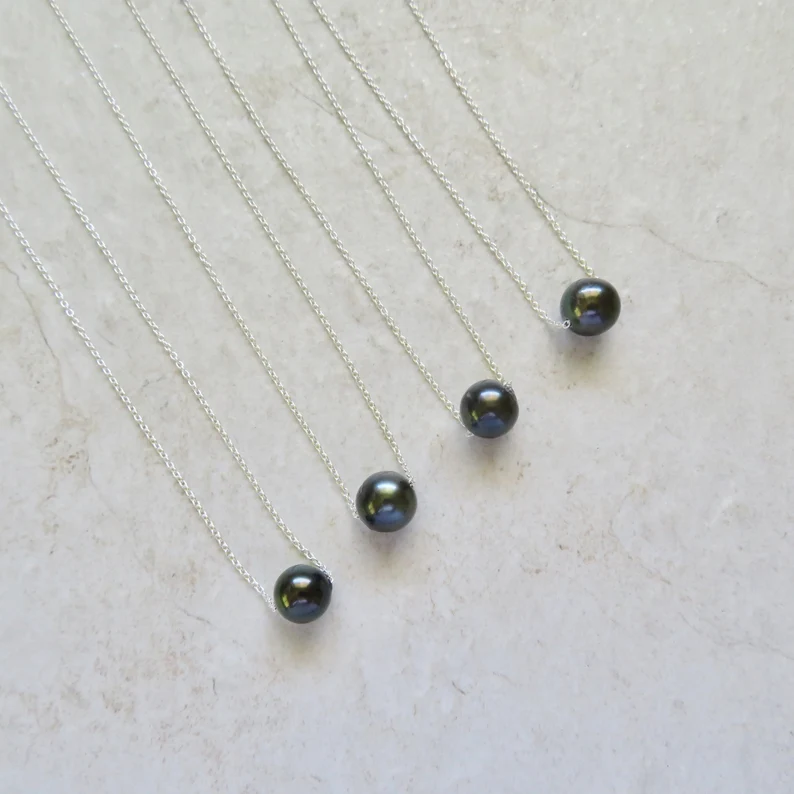
Origin: French Polynesia
Size: Ranges from 8.0mm to 15.0mm
Color: Includes black, gray, charcoal, dark green
Overtones: Peacock, green, purple and more
Treatments: Less than 1% are treated
Shape: Round and baroque
Tahitian pearls are the only naturally dark pearls on the market. As a modern and unique jewelry choice, Tahitian pearls have become very popular among pearl lovers and are one of the most sought-after pearl varieties.
Like south sea pearls, Tahitian pearls also grow very large. But due to their unique colors and overtones, Tahitian pearls stand out more than any other pearl variety. Although they are called black pearls, they are rarely completely black. Tahitian pearls are often dark gray, charcoal, and green with various overtones. The most popular overtone is ‘peacock’ which has a beautiful spectrum of colors that can be found in a peacock feather or an oil slick if you will. These overtones appear to shimmer over the dark body of the pearl, creating an arresting and unique look.
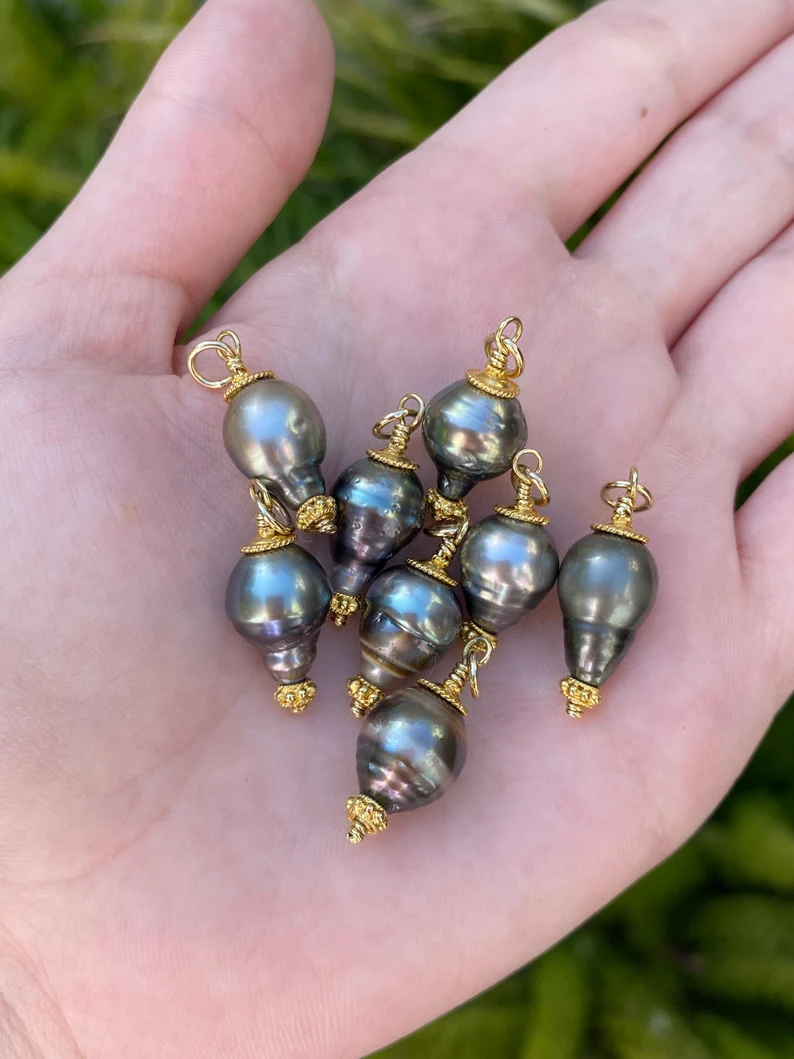
Tahitian pearls come in a variety of shapes, including round, baroque, and circle. Round pearls are the most expensive and sought-after, but irregularly shaped Tahitian pearls display more color and shimmer with gorgeous overtones as the light reflects off the many angles. They are also more affordable making them a great option for any jewelry collection.
Another factor to note is that of all the pearl varieties, Tahitian pearls are the only type that has an internationally accepted standard of quality adopted by the Tahitian government. Only pearls with at least .8mm nacre thickness are exported from Tahiti and anything less than this is not considered a true Tahitian pearl.
Unique Pearl Categories
Apart from saltwater and freshwater pearls, there are pearls that fall into either category but are identified based on how they are formed. These include Keshi and Mabe pearls.
1. Keshi Pearls
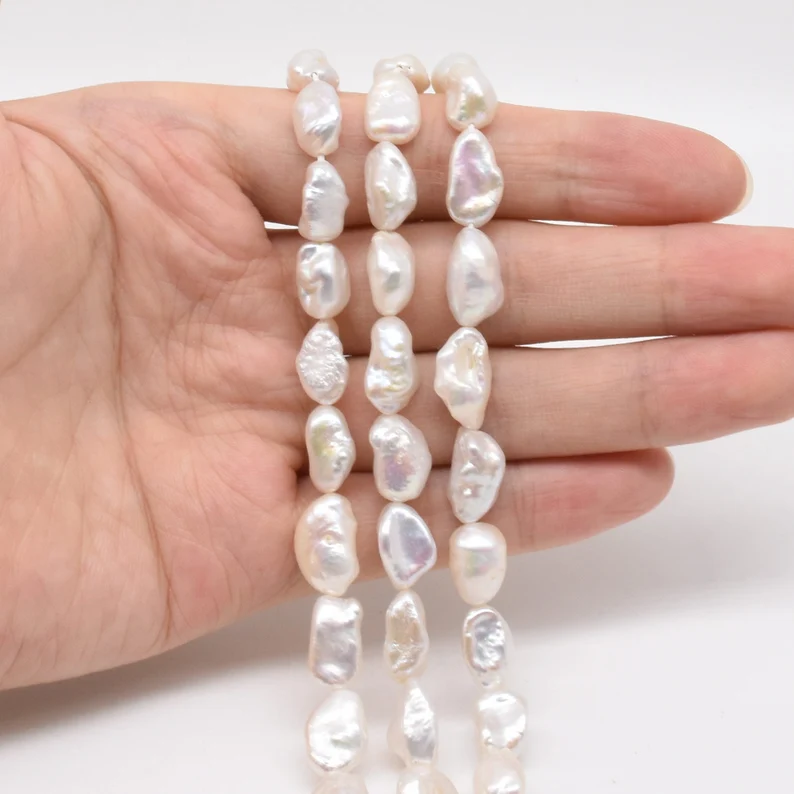
Keshi pearls are the shape of a pearl rather than a type in itself. They can be either freshwater or saltwater in origin, but what is unique about them is their process of formation. Keshi pearls have no standard shape and are quite free-form in appearance. There are many ways that these pearls may be produced, including when the irritant placed in the mollusc is rejected before the pearl is fully formed or when the nucleus fractures and the pearl sacs continue to grow without the nucleus. The pearl continues to form without a nucleus, resulting in wildly irregular shapes that are in themselves intriguing and very desirable.
Keshi pearls, also called poppy seed pearls or seed pearls (Keshi means poppy in Japanese), can be long and thin like pieces of coral, round, oval, and even square-ish. Because each is unique, every piece of Keshi pearl jewelry is one of a kind.
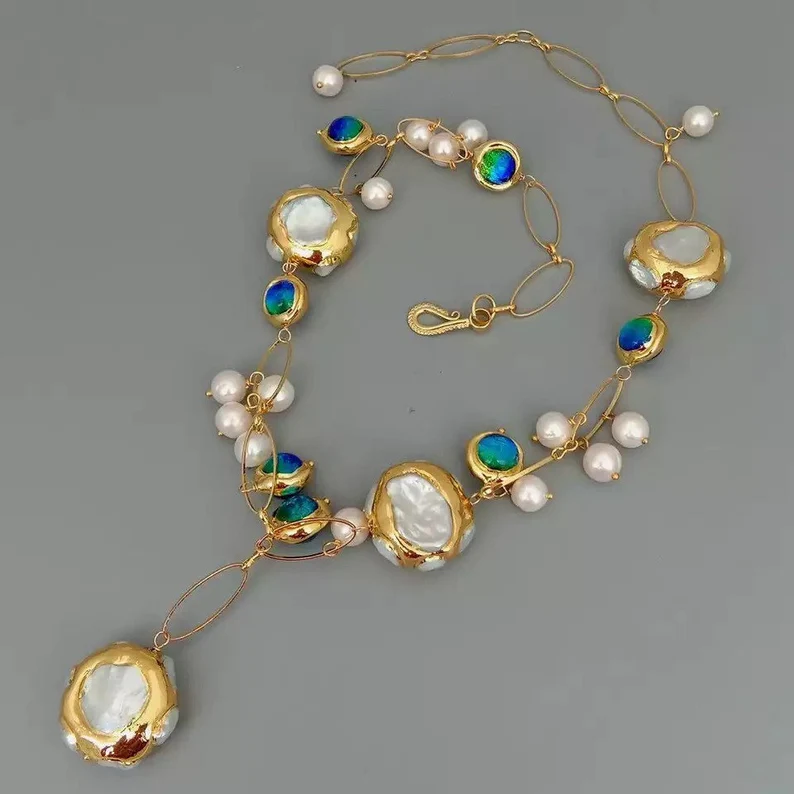
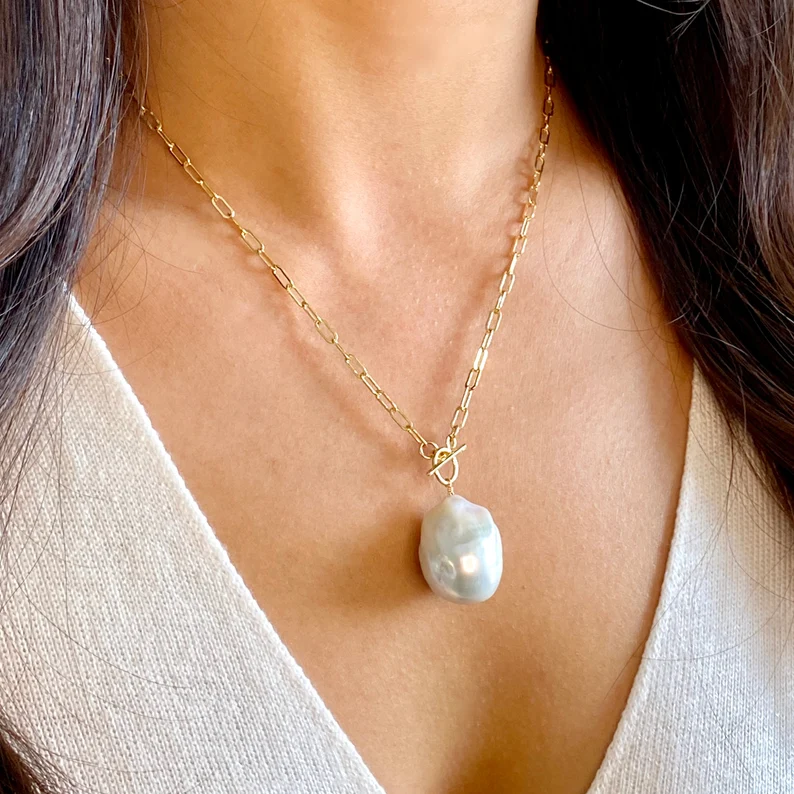
Most Keshi pearls are quite small, as they grow without nuclei. As they are composed entirely of nacre, the luster in these pearls is very high. The irregular shapes and imperfections on the surface of the pearls enhance the luster. Keshi pearls can be found in a range of colors, including white, cream, and lavender. Keshi pearls are a jeweler’s dream as they give the designer ample room for creative expression.
Interestingly, Keshi pearls aren’t considered real pearls, as they are an accident in the pearl farming process. With pearl farming techniques continuing to advance, Keshi pearls are becoming rarer as farmers now check their molluscs and put them through the nucleating process again if they have rejected the first nucleus. This results in fewer and fewer ‘accidental’ Keshi pearls, making them quite rare on the market.
2. Mabe Pearls
Mabe pearls are categorized according to how they are grown and are not a type in itself like the Keshi pearl. They are also known as blister pearls or half-pearls. From the front, these look exactly like normal spherical pearls, but the side view shows that it is actually flat at the back, making it a ‘half-pearl’.
The mabe pearl is grown differently from other cultured pearls and like the Keshi pearl, can be of either freshwater or saltwater origin. Here the semi-circular shaped irritant or nucleus is fixed to the inside of the shell, rather than placed inside the mollusc’s body. As the pearl forms, the back remains fixed to the shell while the front continues to grow in a dome shape.
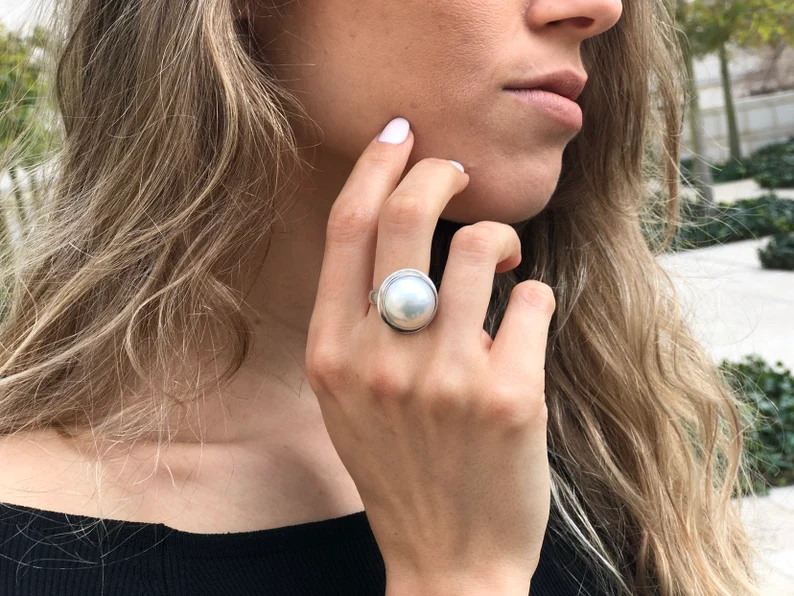
One of the main benefits of mabe pearls is that it gives you the look of a luxurious and expensive pearl, such as south sea pearls, but at a fraction of the price. They also offer a unique look and can be more comfortable to wear as pendants and earrings than fully spherical pearls, as they sit flush against your body.
Although mabe pearls are commonly half-spherical in shape, they can also be oval, pear, and irregularly shaped. Mabe pearls have beautiful luster and overtones and come in a range of colors, although white and gold are the main colors.
These gorgeous pearls make for great pieces of jewelry and are very stylish and sophisticated.
Other Things to Consider – Budget and Grading
The above are the main types of pearl varieties available on the market. There are others, but they are not as popular as these. As you can see, you’ll be spoiled for choice when buying pearls! This is why many people keep adding to their pearl collections. Each type of pearl offers something different.
Before you decide on the type of pearl you wish to purchase, it’s best to pick your budget. The world of pearls is intriguing and draws you in. If you aren’t strict, you’ll find your original budget expanding like elastic!
Also, one problematic area with pearls is the quality grading. Unfortunately, there is no accepted standard or system for grading pearls. The common grading scale used in the US is the AAA (highest quality pearl) –A (lowest jewelry-grade pearl) scale, although the Tahitian A-D scale is also sometimes used. However, how this scale is interpreted varies from vendor to vendor, making the comparison of pearls between vendors almost impossible. For example, a pearl graded A on one site might be a AAA on another. See what we mean? The best way to choose is to look carefully at the images provided and check out which has better luster and color, rather than just going by the grading.
Ready to browse for pearls? Amazon has almost all the popular pearl vendors on their platform making it very easy for you to compare the pearls provided by different vendors.


